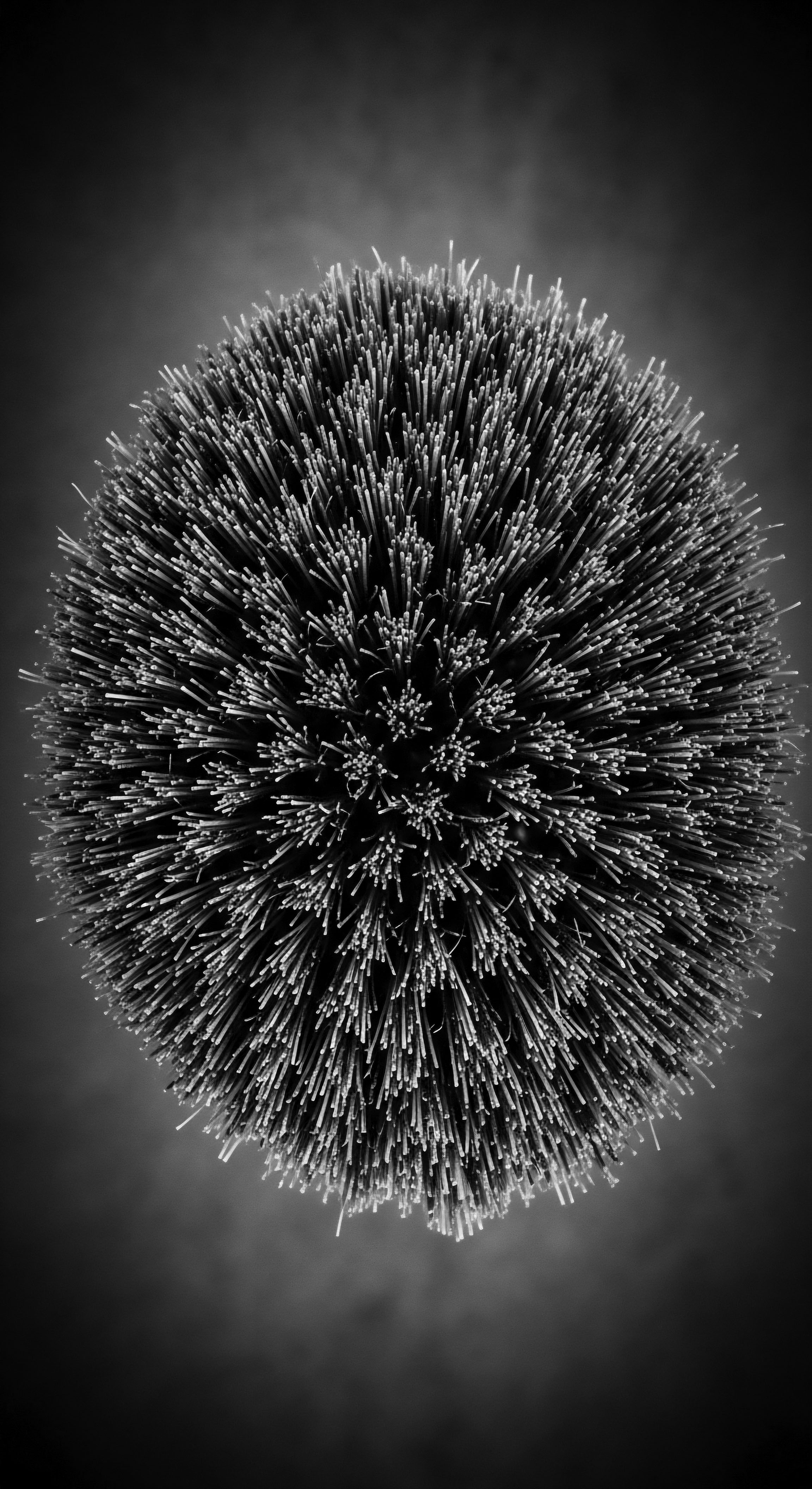
Roots
There exists a whisper, ancient and insistent, carried on the very currents of time, that calls to us through the strands of our hair. For those with textured hair, this whisper is particularly profound, a resonant echo of ancestral wisdom woven into the very helix of our being. This is not some abstract concept; it is a tangible inheritance, a living legacy etched into the very fiber of who we are.
Can the practices of our forebears, those who lived intimately with the land and its bounty, truly offer solace and strength to the modern textured strand? The answer, etched in the patterns of our curls and coils, is a resounding affirmation, a confirmation that our past holds keys to our present vitality.
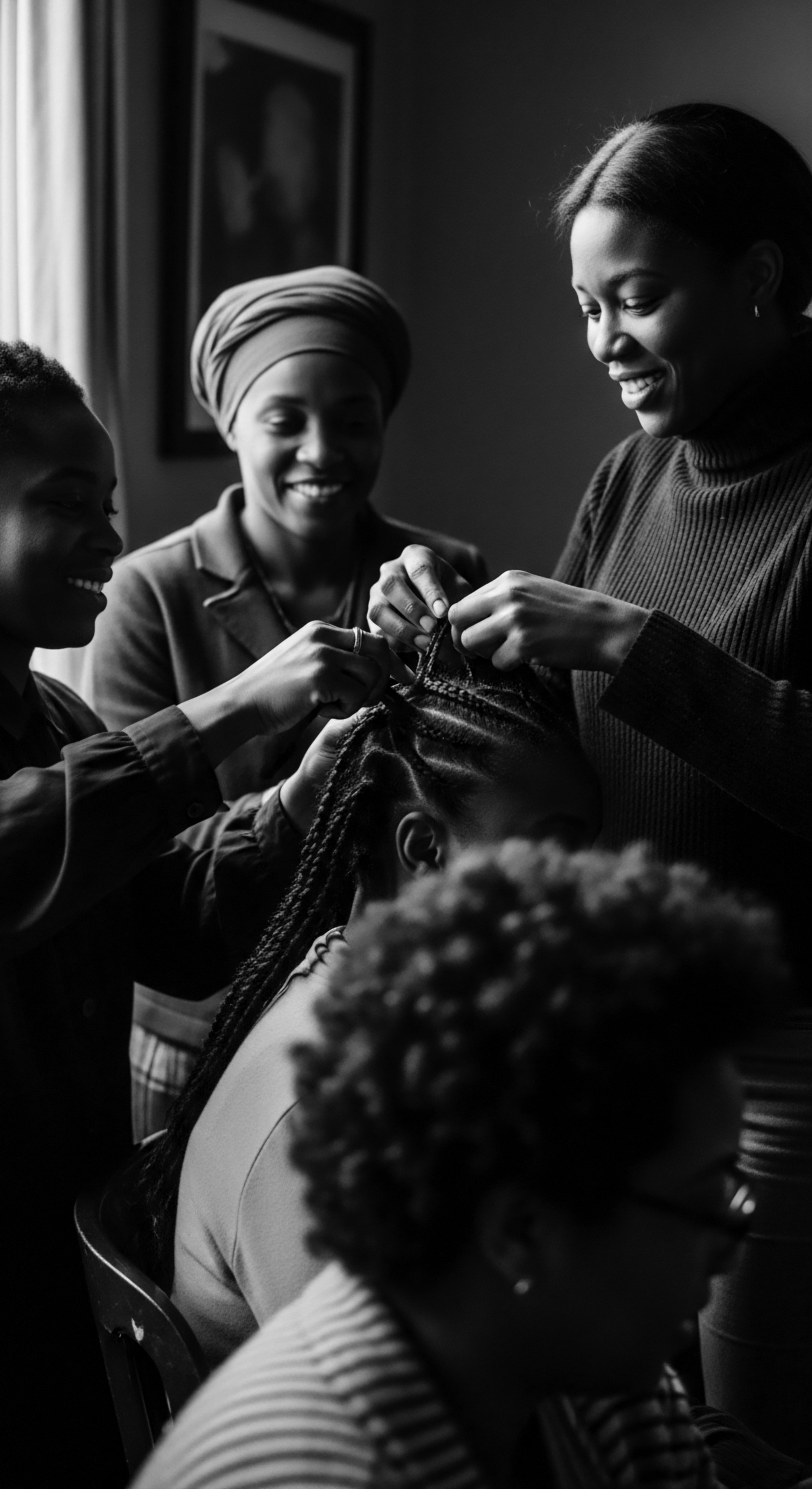
The Living Architecture of Textured Hair
To truly understand the enduring value of ancient methods, one must first appreciate the remarkable architecture of textured hair itself. Unlike its straighter counterparts, textured hair possesses a unique elliptical cross-section, which contributes to its characteristic curl pattern. This shape, combined with a cuticle layer that tends to lift more readily, means natural oils find it more challenging to travel down the hair shaft, often leaving the ends drier. Our ancestors, keenly observant of nature’s rhythms, understood this inherent need for moisture.
They recognized that while the hair itself grew from the scalp, its outward presentation, its health, and its ability to flourish depended on external nourishment and diligent protection. This deep, intuitive understanding, passed down through generations, predates any modern scientific apparatus.
Consider the very journey of a hair strand from its follicle. It begins beneath the skin, a hidden testament to biological ingenuity. As it emerges, its unique helical shape begins to unfold. This shape creates natural points of vulnerability, where strands might rub against each other or lose moisture more easily.
Ancient cultures, from the intricate braiding traditions of West Africa to the meticulous oiling rituals of the Indian subcontinent, developed practices that directly addressed these inherent qualities. They saw hair not as a mere adornment but as a dynamic, living extension of the self, a crown demanding respect and thoughtful engagement.
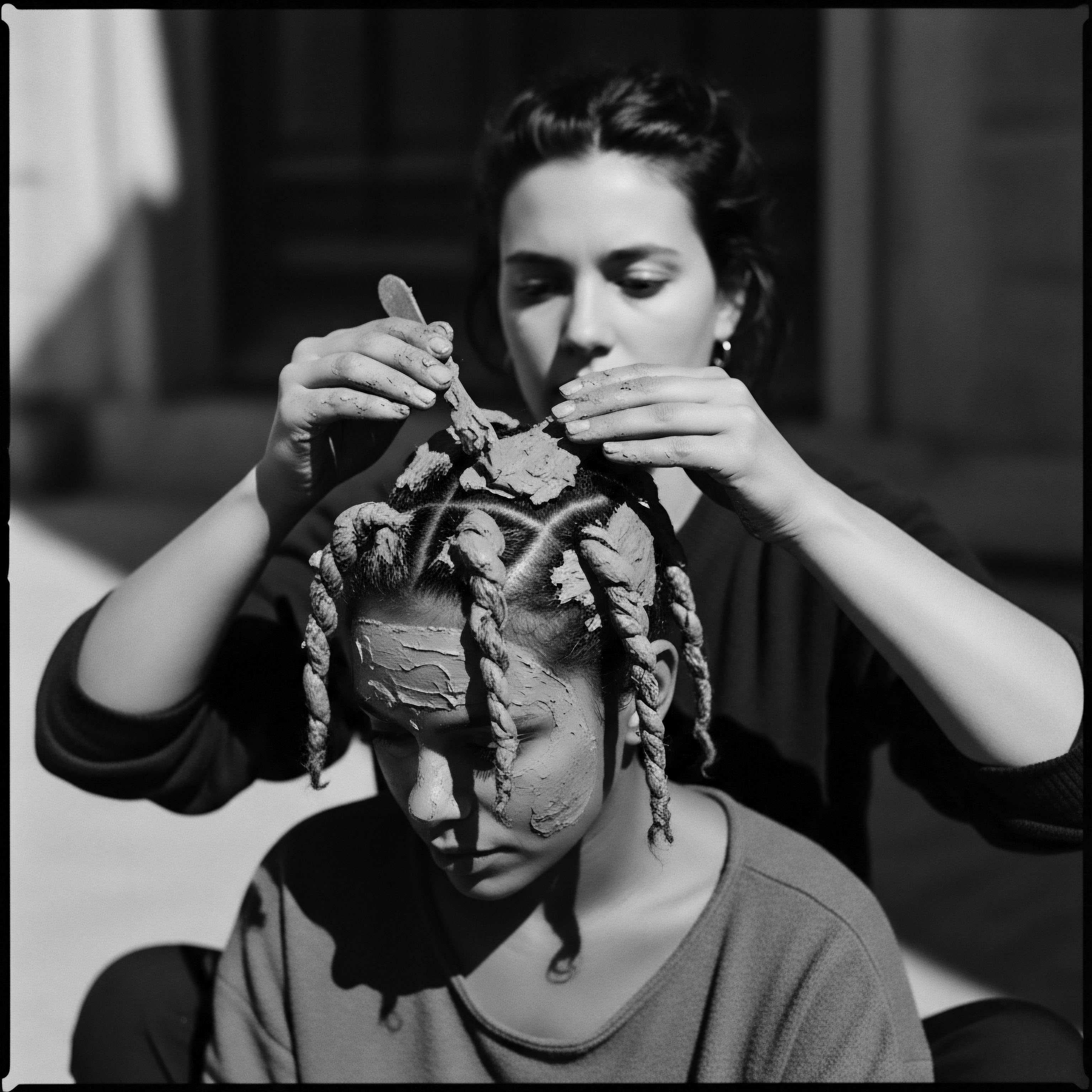
Ancestral Classifications ❉ A Wisdom of Observation
While contemporary systems categorize textured hair into numerical and alphabetical types, our ancestors operated with a classification system rooted in observation and functionality. They discerned hair’s characteristics not through a microscope, but through touch, feel, and its response to various elements. A mother knew her child’s hair might be more prone to tangling or dryness, just as a healer understood which local plant could soothe an irritated scalp. This was an organic system, one where knowledge was embodied rather than codified in charts.
The distinction between a tightly coiled texture and a looser curl was understood by its differing needs for moisture, its propensity for shrinkage, or its ability to hold a particular style. This practical wisdom informed daily care, shaping everything from the selection of natural emollients to the creation of protective styles.
Ancestral wisdom, born from keen observation, provided a functional classification system for textured hair, guiding care without formal charts or categories.
The naming of hairstyles, too, often carried direct reference to hair texture and its behavior. Terms denoting coils, kinks, or twists were not pejorative, but descriptive, celebrating the very structure of the hair. This was a language of recognition, fostering a deep connection to one’s innate hair type, a connection that sometimes feels distant in a world saturated with external ideals. The heritage of these observational practices reminds us that understanding hair’s inherent qualities is the first step toward true care.
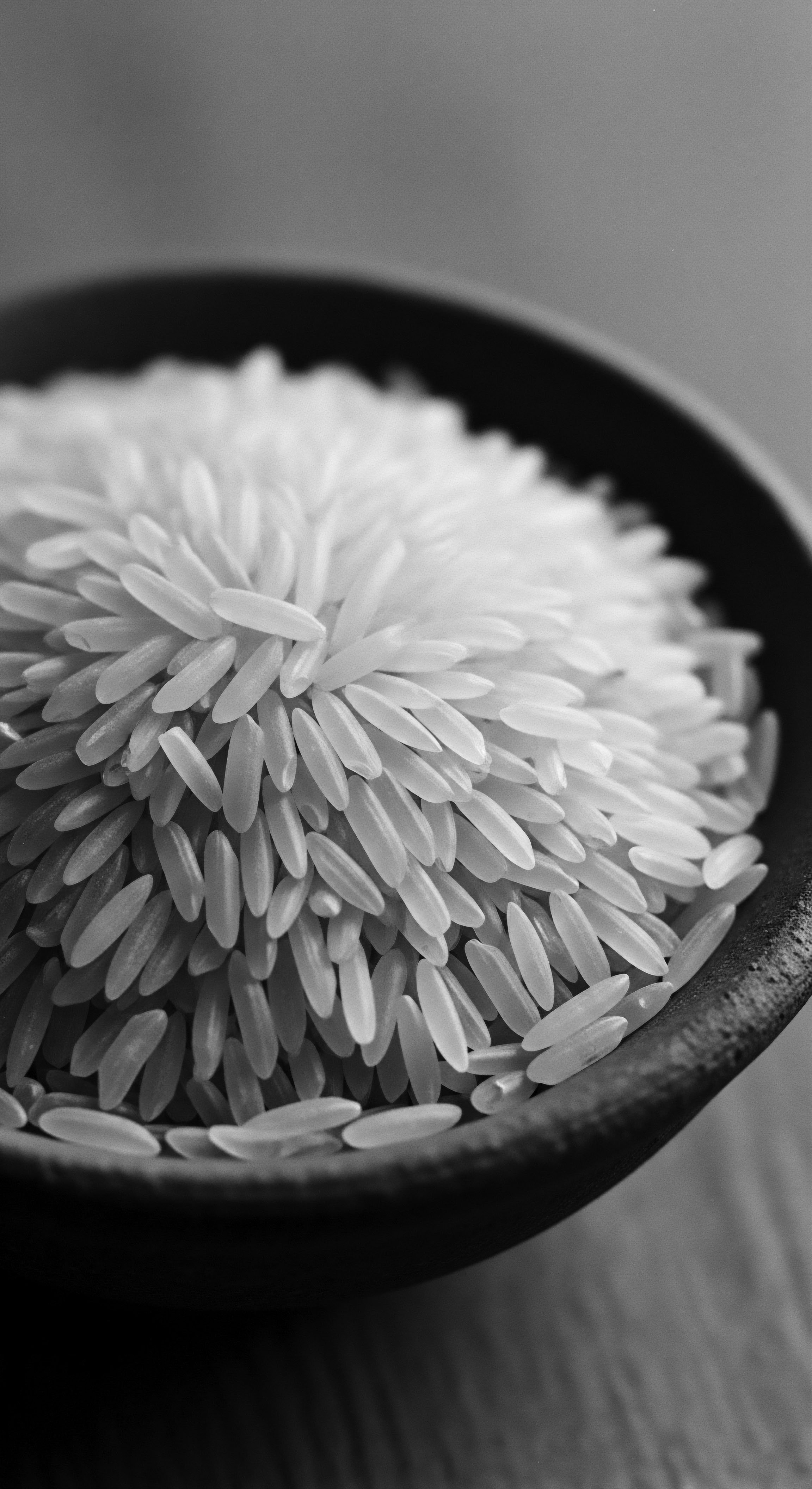
The Foundational Lexicon of Textured Hair Heritage
Every culture holds a unique vocabulary, a lexicon that speaks volumes about its values and its relationship with the world. For textured hair, this ancestral language provides a rich tapestry of meaning. Words passed down through generations describe not only the physical aspects of hair but also its spiritual and social significance. Consider the term “nappy”.
Though often weaponized in colonial contexts to diminish Black hair, its original meaning, particularly in some African dialects, related to the tightly coiled, often resilient nature of the hair. Reclaiming such terms is an act of historical reclamation, a re-centering of the narrative around the inherent beauty and strength of textured hair.
- Sheabutter ❉ A staple across West Africa, known for its deep moisturizing and protective qualities, revered for centuries.
- Ayurveda ❉ A holistic healing system from India, offering a wealth of practices and ingredients for hair health, particularly for dense, textured hair.
- Rhassoul Clay ❉ Hailing from the Atlas Mountains of Morocco, used for centuries as a gentle cleanser and conditioner, respected for its mineral richness.
Beyond specific ingredients, the lexicon extends to practices. Terms like “oiling,” “braiding,” “twisting,” and “co-washing” (though the latter is modern, the practice of washing with conditioning agents has ancient echoes) find their roots in traditions far older than modern product lines. These words represent fundamental care actions, born from centuries of trial and collective wisdom.
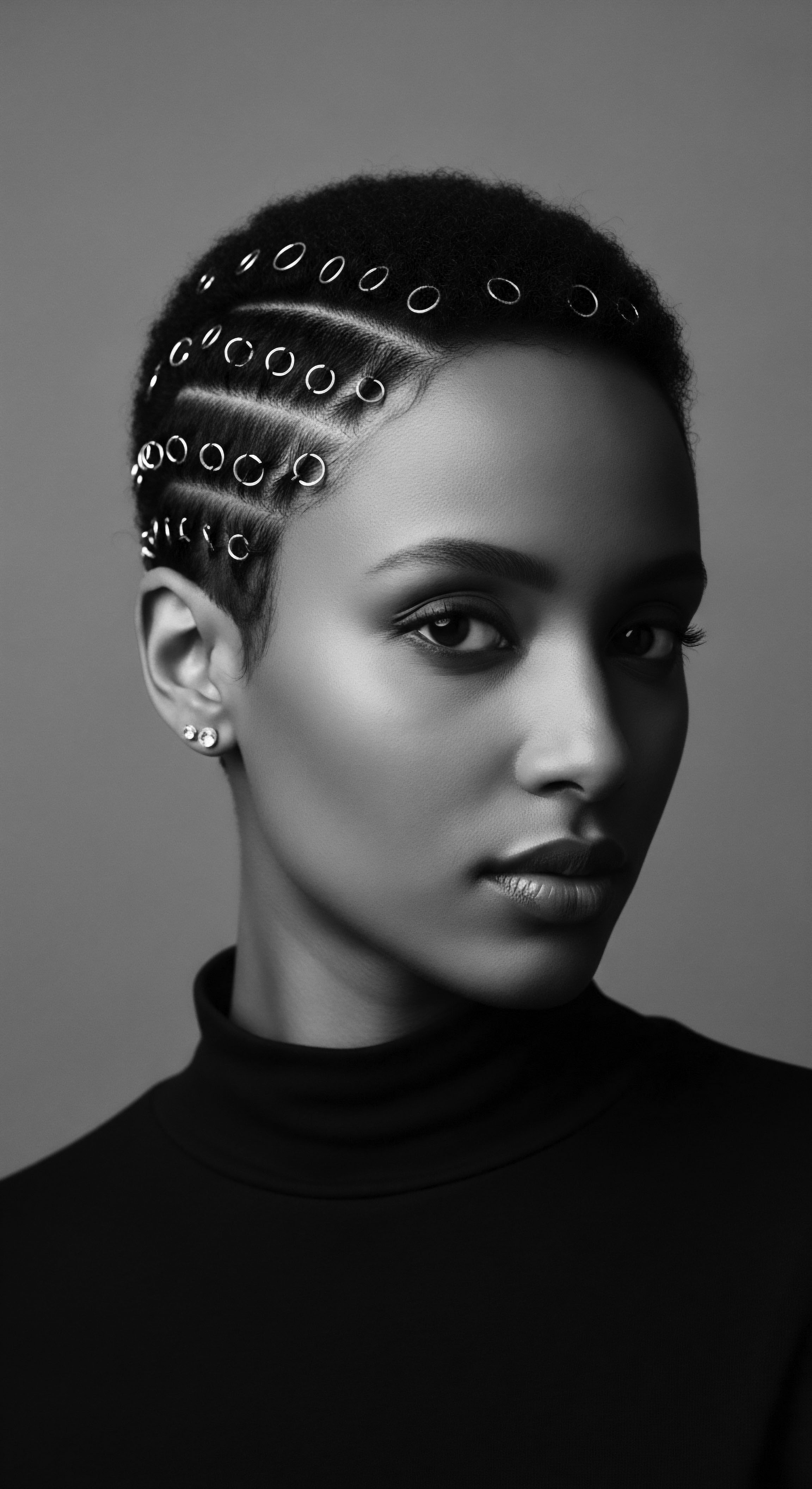
Cycles of Growth, Seasons of Care
Hair growth, like life itself, unfolds in cycles ❉ anagen (growth), catagen (transition), and telogen (rest). Ancient communities, while unaware of these precise biological terms, understood the visible manifestation of these cycles. They observed shedding, new growth, and the overall vitality of the hair throughout different seasons and life stages.
This observational knowledge guided their care practices. For instance, periods of stress or illness, known to affect hair health, were met with restorative herbal remedies or soothing scalp massages, recognizing the interconnectedness of body and spirit.
Environmental factors also played a crucial part. In arid regions, hair care focused on intense hydration and protection from sun and wind. In more humid climates, practices might have emphasized airflow and lighter applications. Food sources, deeply intertwined with hair health, were also understood.
Communities living close to nature consumed diets rich in vitamins and minerals, which, unknowingly, provided the building blocks for strong hair. This integrated understanding of hair within its ecological and nutritional context was a cornerstone of ancient hair care.
Ancient practices recognized the intimate connection between hair health and the environment, adapting care to seasonal shifts and local resources.
For example, in many traditional African societies, certain hair styles or ingredients were reserved for specific seasons or life events. A young woman’s braids might tell a story of her transition to adulthood, or a particular herb might be used during the dry season to combat brittle strands. This deep attunement to natural rhythms allowed for a dynamic, responsive approach to hair care, a heritage we can certainly learn from today.
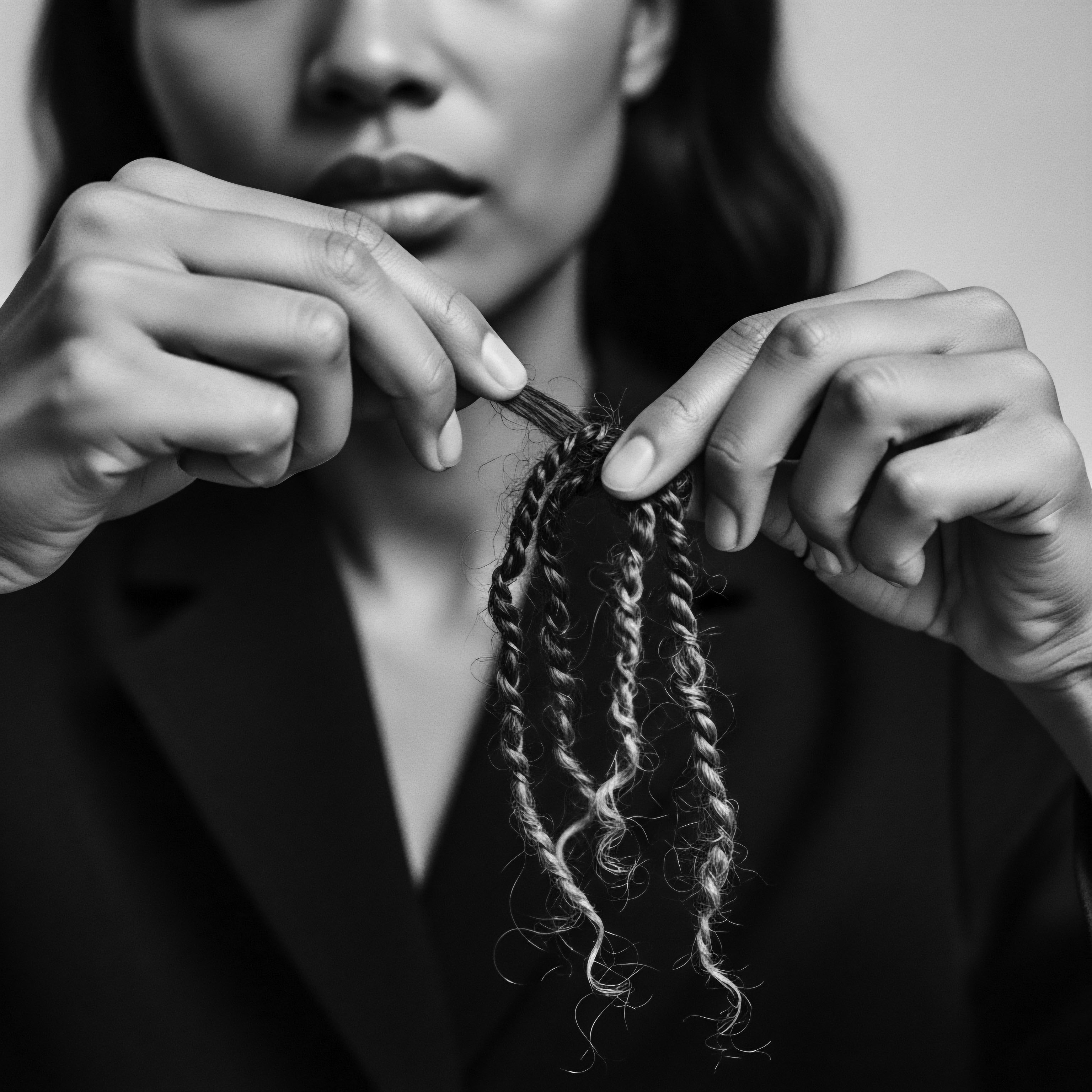
Ritual
The very act of caring for textured hair has long been a profound ritual, a sacred performance woven into the fabric of communal life and individual identity. Far from being a mere chore, these practices were, and remain, an art form, a science of touch, and a testament to enduring heritage. When we delve into ancient methods, we discover not just techniques, but entire philosophies of engagement with our crowns, philosophies that speak volumes to the needs of modern textured hair.
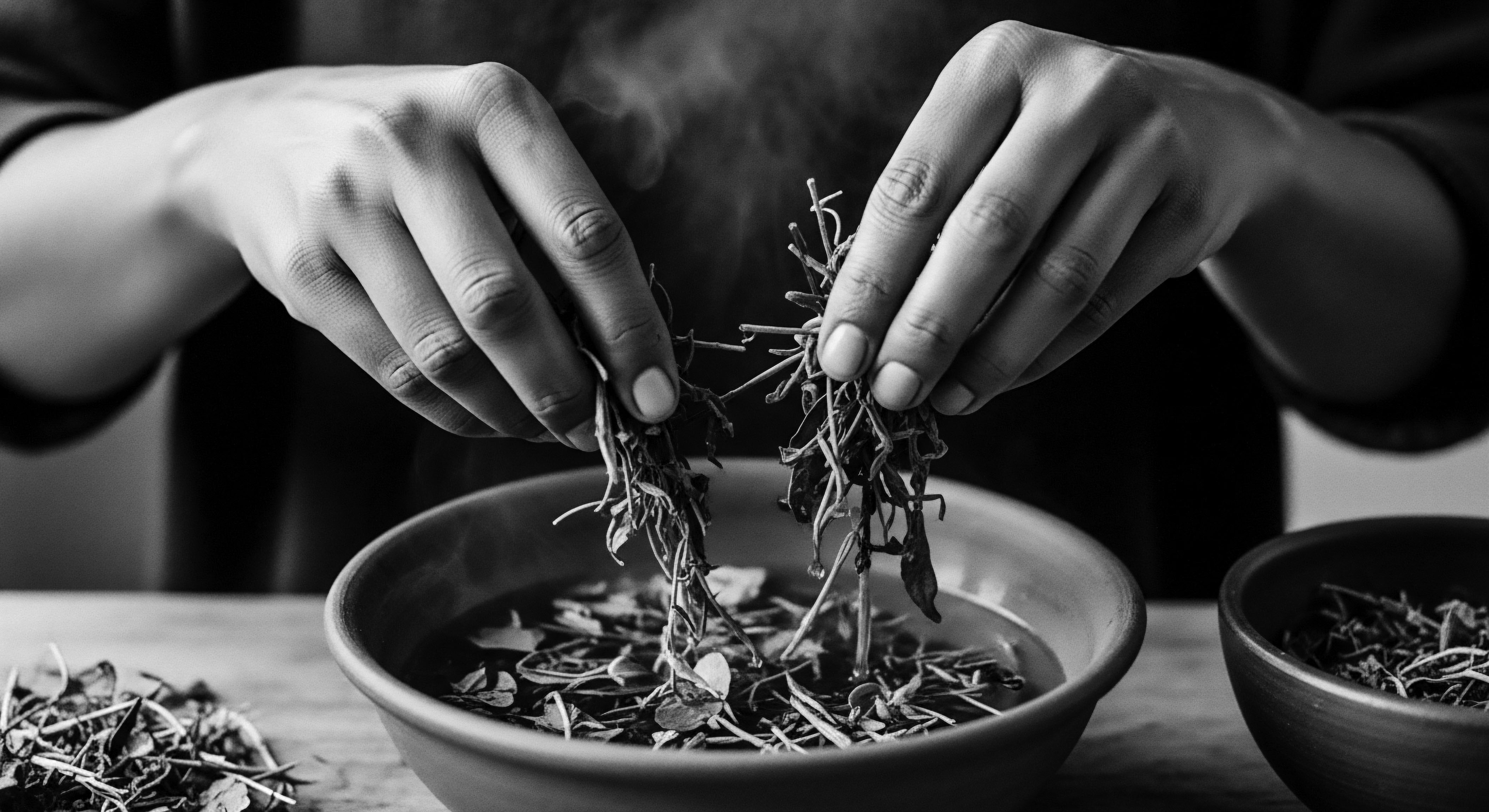
Protective Styling ❉ A Legacy of Strength and Story
Perhaps no aspect of ancient hair care better speaks to the benefit for modern textured hair than the profound heritage of protective styling. From the intricate cornrows of the Ife to the majestic braided crowns of the Fulani, these styles were far more than aesthetic choices. They were acts of preservation, safeguarding vulnerable strands from environmental damage, reducing breakage, and promoting growth.
In ancient African societies, a woman’s braids could signify her marital status, age, tribal affiliation, or even her readiness for war (Byrd & Tharps, 2001). These styles provided a structured, secure environment for the hair to flourish, minimizing manipulation and allowing natural oils to distribute.
The mechanics of these styles were instinctively brilliant. By neatly tucking away hair ends, the oldest and most fragile part of the strand, they shielded them from friction and tangles. The very tension of the braid, when executed with skilled hands, could also stimulate the scalp, promoting circulation.
This millennia-old wisdom directly addresses contemporary challenges faced by textured hair ❉ how to retain length, how to manage dryness, and how to minimize daily manipulation. The historical context of protective styles reminds us that practicality and profound meaning can coexist beautifully.
| Traditional Practice Cornrows (West/Southern Africa) often signified social status or marital status, used for hygiene and protection. |
| Modern Application for Textured Hair Micro-braids, flat twists, and feed-in braids continue to protect ends and offer versatile styling, reducing daily manipulation and promoting length retention. |
| Traditional Practice Bantu Knots (Southern Africa) served as a setting technique for waves and curls, or as a standalone style. |
| Modern Application for Textured Hair Used as a heatless curling method, providing defined, stretched curls without thermal damage. |
| Traditional Practice Braids with Extensions (Ancient Egypt, various African cultures) added length, volume, and offered status. |
| Modern Application for Textured Hair Braids with synthetic or human hair extensions are a popular protective style, providing a break from daily styling and offering diverse looks. |
| Traditional Practice The enduring power of protective styling bridges millennia, offering a legacy of care that champions textured hair's health and versatility. |
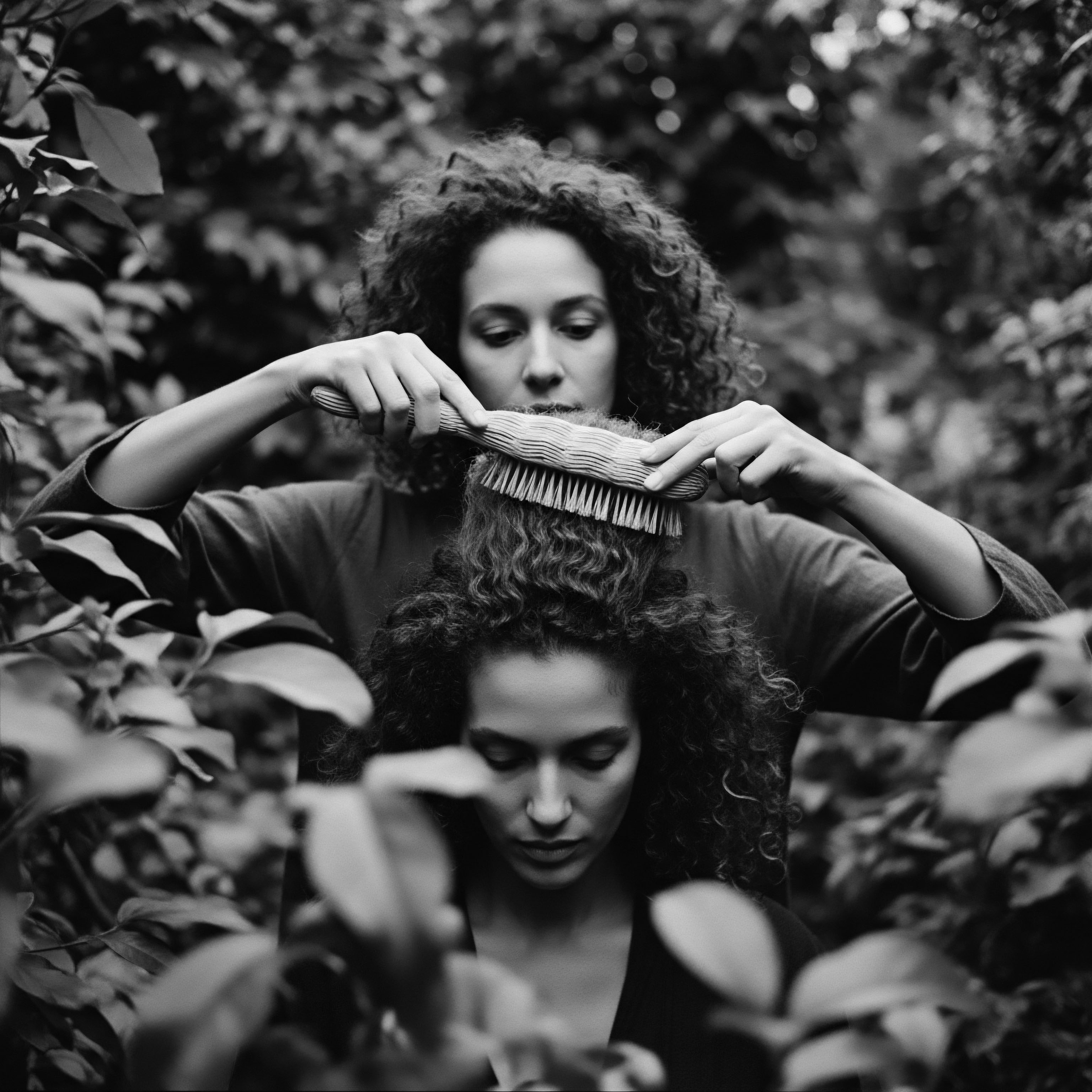
Natural Styling ❉ Defining Beauty with Earth’s Bounty
Before synthetic polymers and chemical relaxers, ancient cultures honed the art of defining and shaping textured hair using only what nature provided. The mucilaginous properties of flaxseed (linseed) were harnessed to create definition and hold in ancient Egypt and India, much like modern curl gels. The soothing sap of aloe vera, celebrated for its hydrating properties, served as a leave-in conditioner, encouraging clumping and sheen.
These ingredients worked in harmony with the hair’s natural inclinations, rather than attempting to force it into an unnatural state. They offered pliability and moisture, allowing the hair to express its inherent beauty.
The practice of “finger coiling” or “shingling” with natural emollients, while not explicitly documented in every ancient text, is an intuitive extension of applying oils and butters to separate and define curls. This intimate, hands-on approach to hair, spending time to engage with each section, creates a bond between the individual and their crown. It’s a mindful ritual that allows for detailed attention, ensuring product is distributed evenly and definition is maximized. This patient, observant approach contrasts sharply with the hurried, often damaging, routines that sometimes characterize modern hair care.
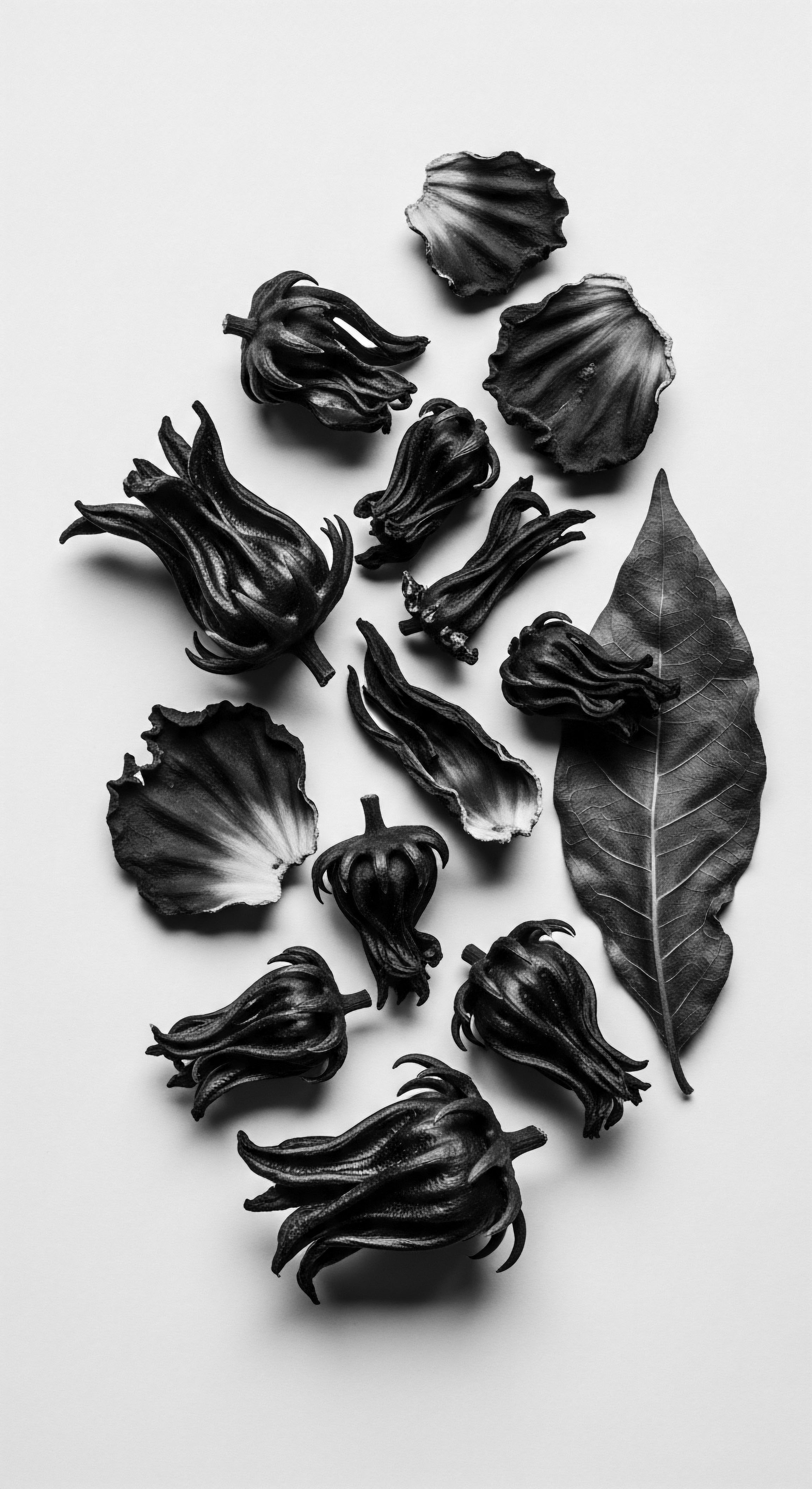
The Tools of Tradition ❉ Crafted for Care
The tools our ancestors employed for textured hair care speak volumes about their understanding of its fragility and strength. Wide-toothed combs, often carved from wood or bone, were designed to gently navigate tangles without causing breakage. These were not mass-produced, but carefully crafted, sometimes even personalized.
Similarly, styling needles and pins, used for intricate braiding or securing hair, were fashioned with precision, reflecting the value placed on hair artistry. The materials themselves were chosen for their natural properties ❉ wood to absorb excess oil, bone for smooth gliding, and natural fibers for cleansing or polishing.
Ancient tools for hair care, crafted from natural materials, were designed with an intuitive understanding of textured hair’s delicate nature.
The implements were an extension of the hands, designed to work with, rather than against, the hair’s natural curl pattern. This stands in stark contrast to the often harsh, heat-intensive tools that dominate modern hair styling, which, while offering speed, can compromise hair integrity over time. The heritage of these gentle, thoughtfully designed tools serves as a powerful reminder that effective care need not be aggressive; indeed, a tender touch often yields the most resilient results.

Beyond Aesthetics ❉ Hair as a Cultural Archive
Hair, especially textured hair, has historically served as a profound repository of cultural identity and ancestral memory. In countless societies, hair practices were not isolated acts of vanity but were deeply embedded in community rituals, spiritual beliefs, and social structures. For the Maasai, certain hairstyles denoted age, status, and warrior prowess.
For ancient Egyptians, elaborate wigs and adorned braids conveyed wealth, power, and religious devotion (Brier & Hobbs, 2008). The very act of caring for hair was a means of transmitting values, stories, and connections across generations.
This deep connection between hair and identity extends into the Black diaspora, where hair became a powerful symbol of defiance, resilience, and cultural pride in the face of oppression. The continuation of braiding traditions, the creation of unique styling methods, and the reverence for natural hair became acts of self-preservation and cultural affirmation. Understanding this heritage shifts the conversation about hair care from mere aesthetics to a deeper appreciation of its role as a living archive, a continuous link to ancestral narratives and collective memory.
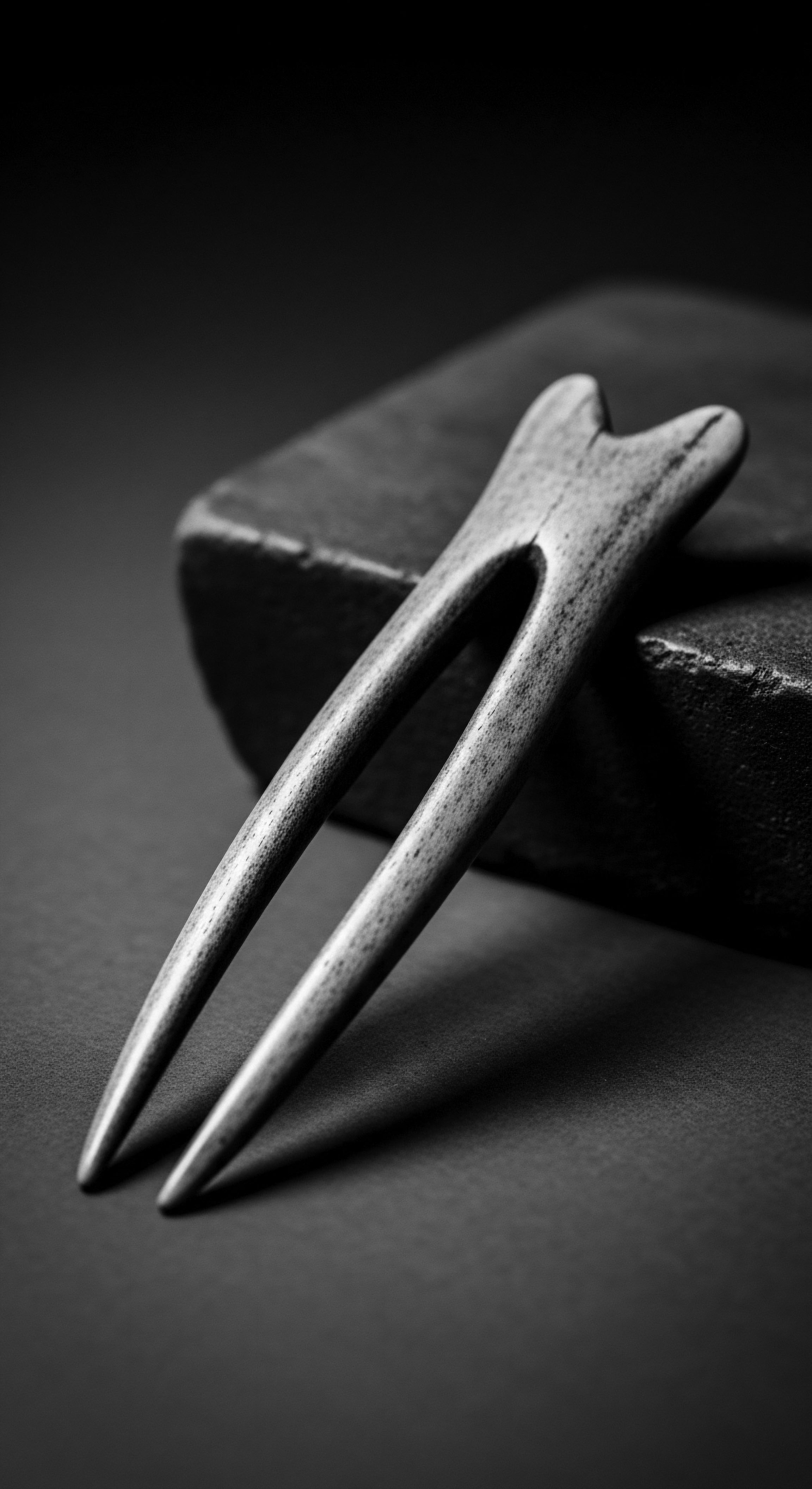
Relay
The wisdom of the past, like a continuous relay race, passes its torch to the present, offering not just fragmented insights but a coherent philosophy of holistic care for textured hair. This journey from ancient observation to modern scientific validation reveals that the benefits of ancestral methods are not anecdotal; they are deeply rooted in principles that promote genuine hair health and resilience, all viewed through the profound lens of heritage.
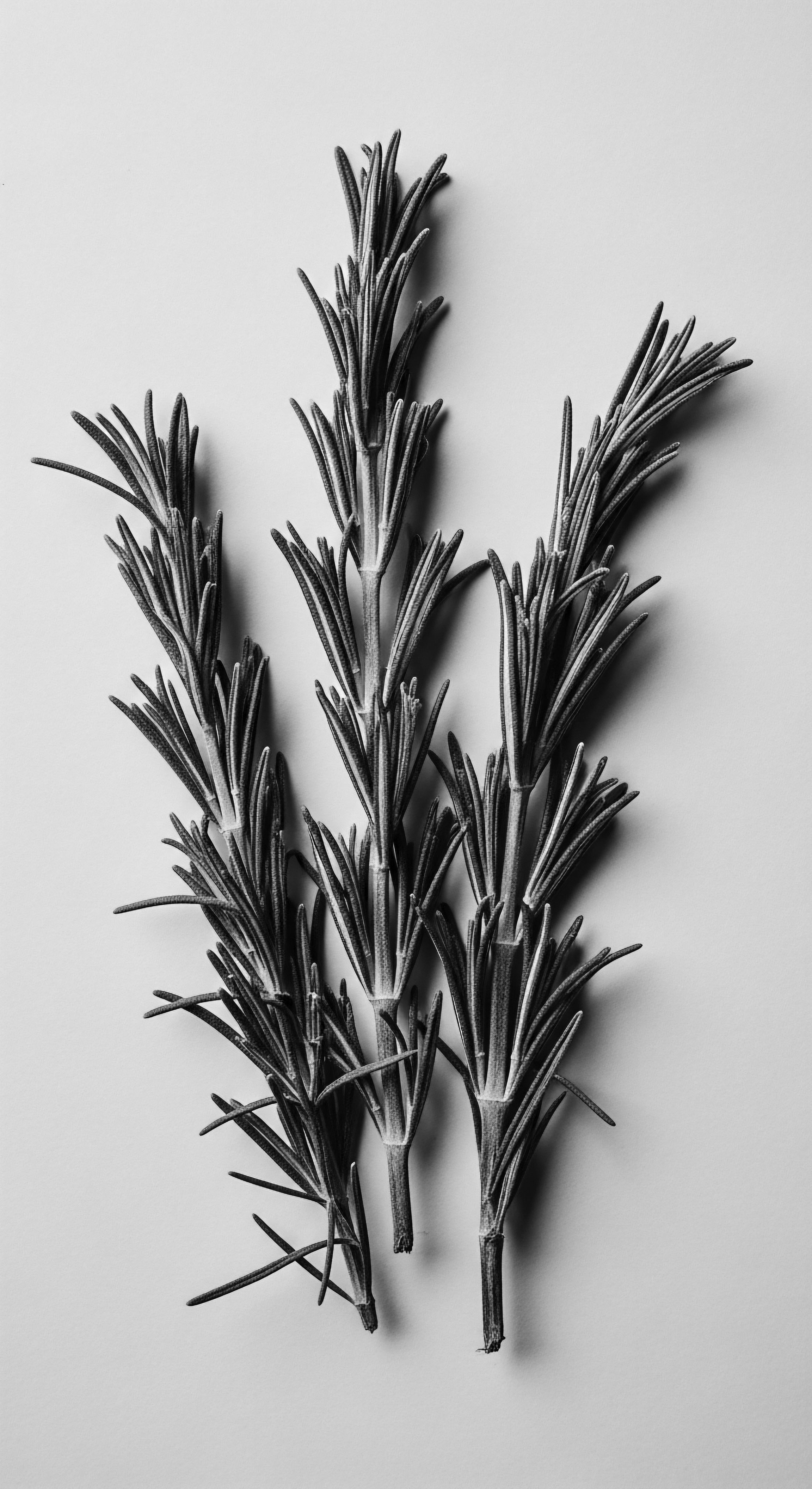
Regimens Rooted in Ancestral Wisdom
Modern hair care regimens often emphasize multi-step processes ❉ pre-poo, cleanse, condition, style. Strikingly similar patterns existed in ancient traditions, though they were organic, passed down through oral tradition and lived experience. These were not rigid schedules but intuitive responses to the hair’s needs, guided by seasonality, life events, and available resources.
For instance, the practice of applying oils or herbal infusions before washing (a “pre-poo”) can be found in various cultures, designed to protect the hair from stripping and add moisture before cleansing. This ancestral “pre-poo” ensured the hair remained supple, a vital consideration for moisture-thirsty textured strands.
Consider the consistent use of natural ingredients like Shea Butter (Vitellaria paradoxa) across West Africa for centuries. Its rich fatty acid profile provides superior emollience and occlusion, creating a protective barrier that seals moisture into the hair shaft. Modern science affirms its benefits for reducing water loss from the hair and skin (Akihisa et al. 2010).
Similarly, ancient Egyptians employed Castor Oil for hair growth and conditioning, a practice that continues today, valued for its ricinoleic acid content which possesses anti-inflammatory properties that can promote scalp health. These aren’t just old wives’ tales; they are time-tested practices whose efficacy is increasingly understood through contemporary scientific inquiry.
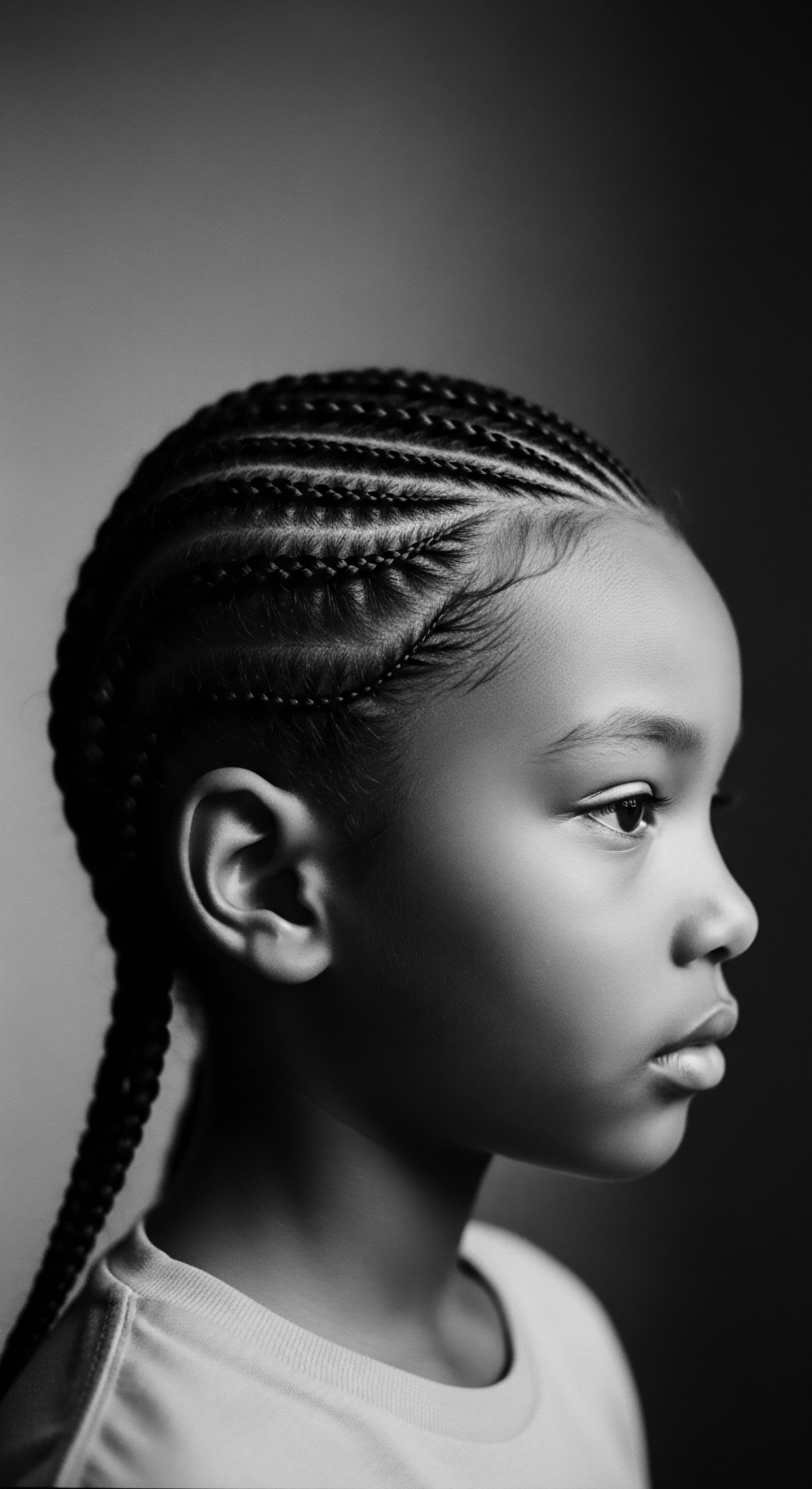
The Nighttime Sanctuary ❉ Bonnet Wisdom and Beyond
The practice of covering hair for sleep, often with fabrics like silk or satin, has deep ancestral roots, far preceding the modern silk bonnet. In many African cultures, headwraps and coverings were worn not only for cultural or religious reasons but also for practical protection. During sleep, hair is vulnerable to friction against rough surfaces like cotton pillowcases, leading to breakage and frizz, particularly for delicate textured strands.
Ancient societies, intuitively understanding this, utilized soft cloths or specifically designed coverings to shield the hair, preserving moisture and maintaining styles. This simple act of protection, now embodied by the ubiquitous satin bonnet, is a direct inheritance from practices born of necessity and wisdom.
This ritual speaks to a comprehensive understanding of hair care that extends beyond daytime styling. It acknowledges that hair health is a 24-hour consideration, a continuous loop of protection and nourishment. The bonnet, therefore, is not merely a modern accessory; it is a continuation of an ancestral safeguard, a silent guardian of the textured crown through the night hours. Its consistent use remains a cornerstone of effective moisture retention and breakage prevention for modern textured hair.
- Protect from Friction ❉ Covering hair prevents direct contact with absorbent fabrics like cotton, which can strip moisture.
- Maintain Style ❉ Preserves curl patterns, braids, or twists, reducing the need for daily restyling and manipulation.
- Retain Moisture ❉ Creates a micro-environment that minimizes water loss from the hair shaft during sleep.
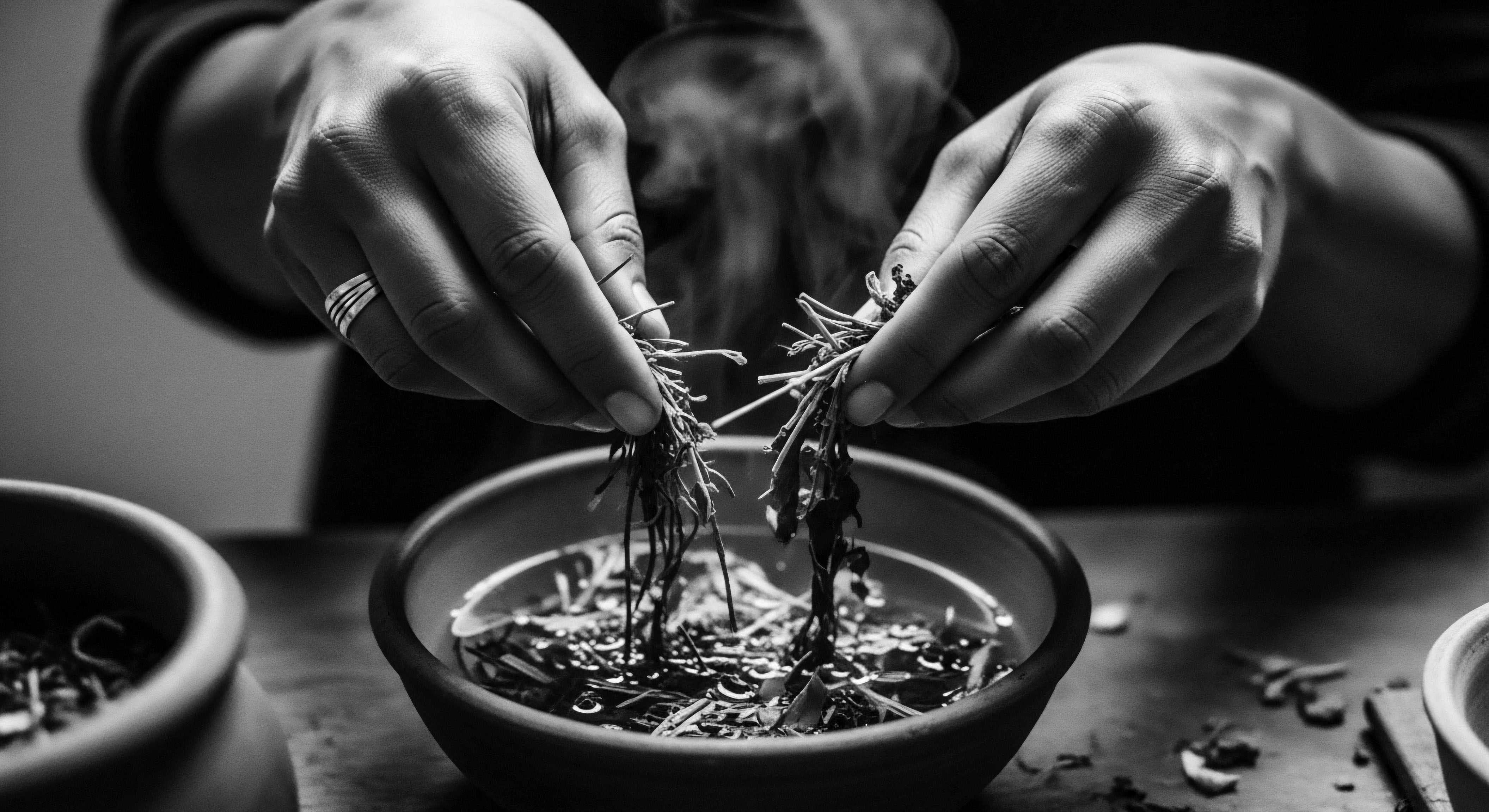
Ingredient Journeys ❉ From Earth to Strand
The earth’s bounty provided a rich pharmacy for ancient hair care, and many of these natural remedies hold profound relevance today. Consider the journey of Rhassoul Clay, harvested from the Atlas Mountains of Morocco. For centuries, it has been used as a mineral-rich cleanser and conditioner.
Its unique molecular structure allows it to absorb impurities and excess oil without stripping the hair’s natural moisture, making it particularly suited for textured hair that benefits from gentle cleansing. Modern understanding of its high silica and magnesium content helps explain its historical efficacy in promoting shine and softness.
Similarly, the widespread use of various plant oils, such as Coconut Oil (ubiquitous in tropical regions) and Olive Oil (a staple in Mediterranean and Middle Eastern traditions), was not arbitrary. These oils, rich in saturated and monounsaturated fats, are known to penetrate the hair shaft, reducing protein loss during washing and conditioning from within. This internal fortification, a benefit only recently fully understood by science, was a central aim of ancient oiling rituals, which were not just about surface shine but about genuine strand strength. These were the earliest “deep conditioning” treatments.
Ancient ingredients, meticulously sourced and applied, provided benefits for textured hair now validated by contemporary scientific understanding.
The continuity of these ingredients in hair care, from bustling ancient markets to contemporary beauty aisles, speaks to their timeless effectiveness. They are not merely fads but pillars of a hair care heritage that prioritized natural solutions and sustained vitality. The challenge for modern users lies not in finding new ingredients, but in re-connecting with the profound wisdom embedded in these ancestral choices, understanding their journey from the earth to our crowns.
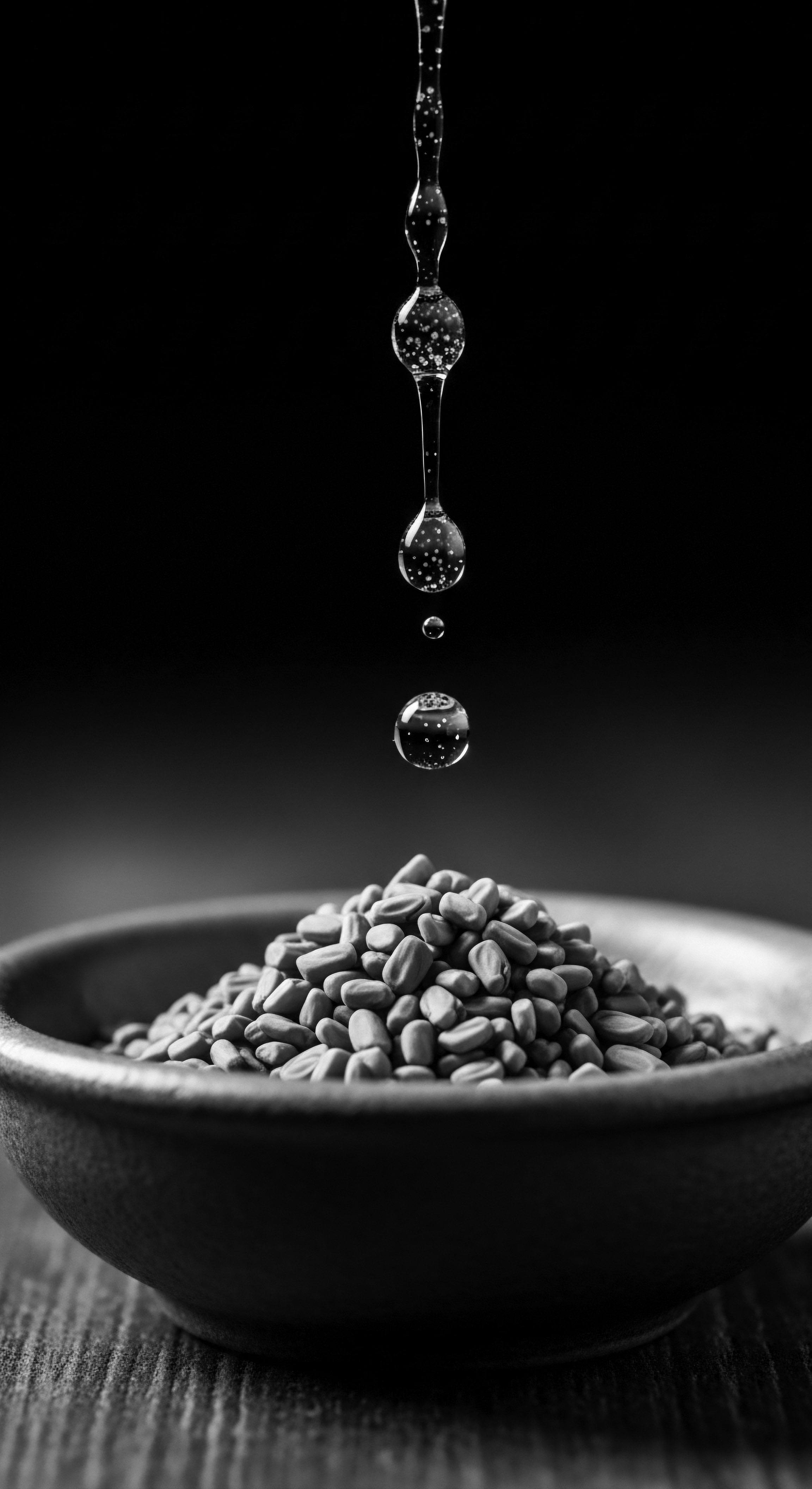
Solving Challenges with Timeless Wisdom
Many of the hair challenges faced by textured hair today—dryness, breakage, lack of growth, scalp irritation—were also concerns for our ancestors. Their solutions, often holistic and preventative, offer powerful lessons. Instead of harsh chemical treatments, they relied on plant-based remedies, diet, and careful handling.
A dry, itchy scalp might have been treated with a poultice of aloe vera or a soothing oil massage, leveraging the plant’s anti-inflammatory properties and the physical stimulation of massage to improve circulation. For breakage, the answer was often protective styling and consistent oiling, reinforcing the hair’s external barrier.
The ancestral approach was fundamentally about balance and nurturing. They recognized that hair health was intrinsically linked to overall well-being. A robust diet, rich in nutrient-dense foods (the original “hair vitamins”), was as crucial as external applications. This holistic perspective, where internal nourishment complements external care, remains a powerful, often overlooked, aspect of textured hair health.
The wisdom passed down across generations reminds us that true hair vitality stems from a comprehensive approach, where every aspect of one’s being contributes to the health of the crown. This ancient knowledge serves as a potent guide for modern solutions, steering us toward a more sustainable and deeply nourishing approach to textured hair care.
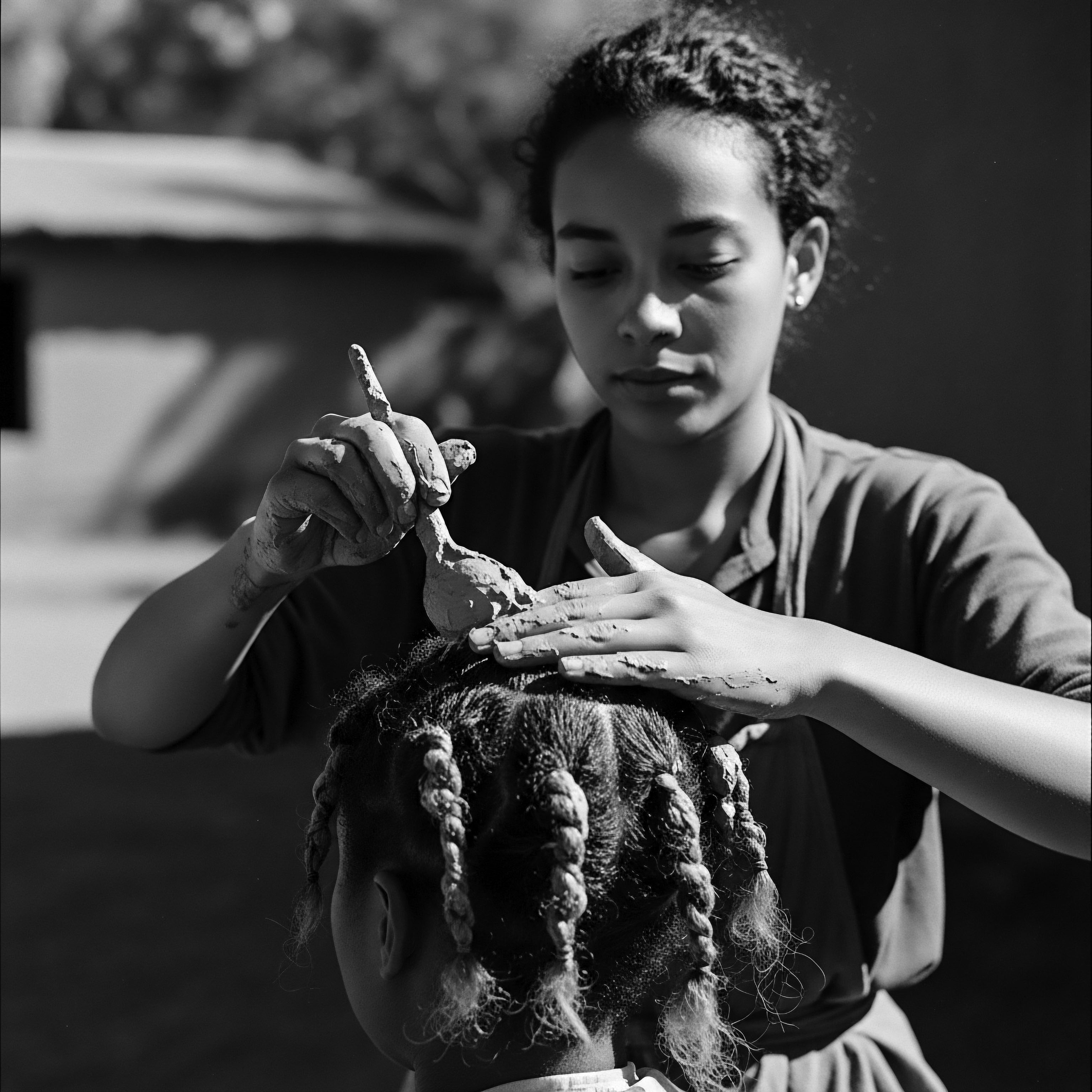
Reflection
The journey through the intricate world of textured hair heritage reveals a profound truth ❉ the echoes from the source, the tender thread of ritual, and the continuous relay of wisdom converge to offer timeless benefits for our modern crowns. This is not simply a historical curiosity; it is a living, breathing archive, a testament to the ingenuity and resilience of Black and mixed-race communities throughout time. The ancient ways, far from being relics of a distant past, continue to hold a vibrant relevance, offering a grounding force in an often-overwhelming contemporary landscape of hair care products and fleeting trends.
When we choose to integrate ancient hair care methods into our modern regimens, we are doing more than just nourishing our strands. We are engaging in an act of profound remembrance, connecting with a lineage of care that spans continents and centuries. We are acknowledging that the wisdom of our ancestors, born from intimate observation of nature and the human body, was not primitive but sophisticated in its understanding of balance and longevity. The very act of oiling the scalp, of meticulously sectioning hair for a protective style, or of crafting a gentle herbal rinse, becomes a meditative dance with history, a personal and collective reclamation of identity.
The enduring power of ancient methods for textured hair lies in their inherent respect for the hair’s natural state, their reliance on earth’s pure offerings, and their deep integration into community and cultural expression. They remind us that hair care is not merely about aesthetic outcome but about holistic well-being, about connection to self, and about honoring the journey of those who came before us. This is the very Soul of a Strand ❉ a recognition that our hair, in all its unique texture and glory, is a beautiful, resilient helix, unbound by time, carrying within it the radiant legacy of our collective heritage.
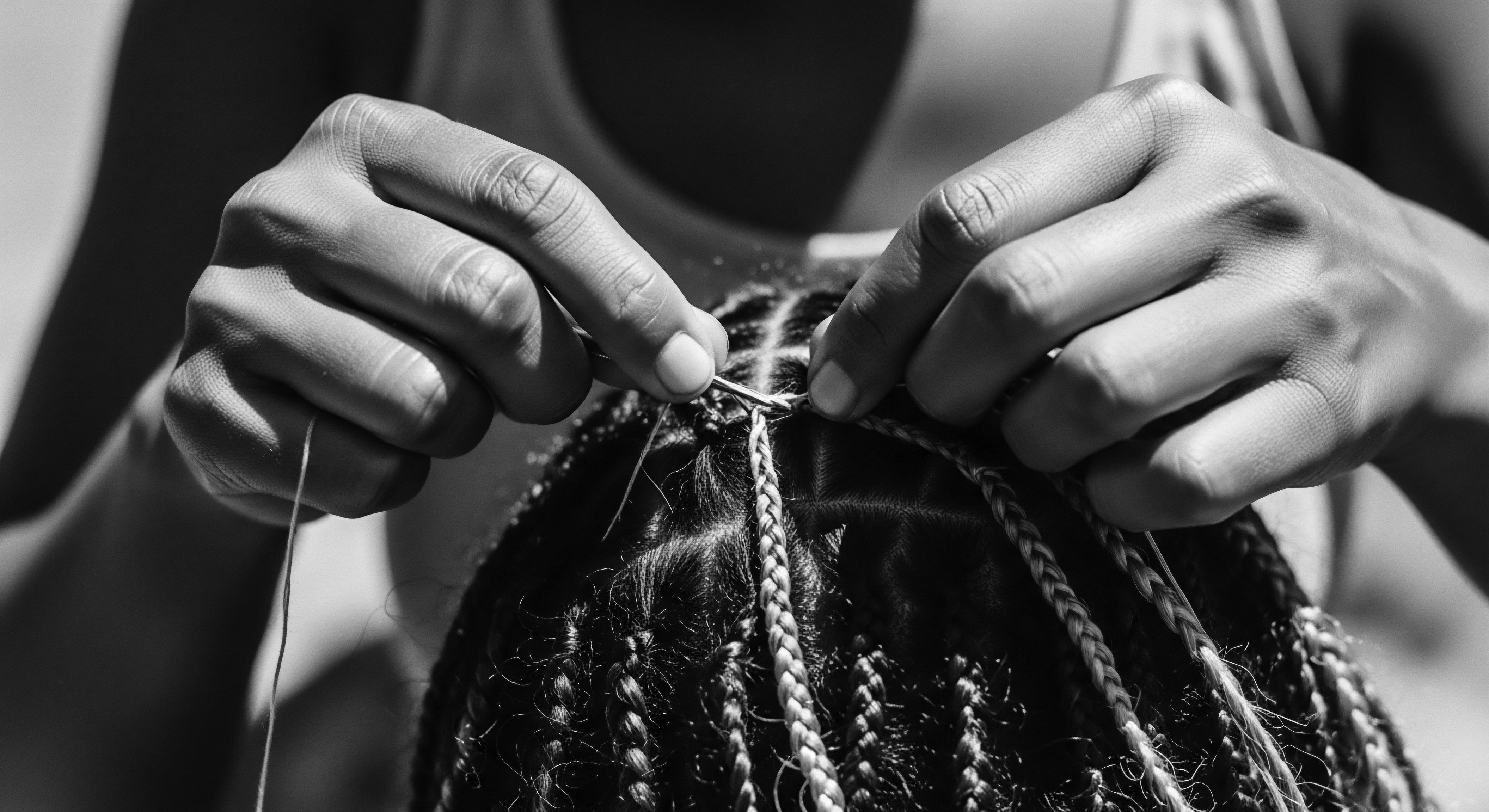
References
- Byrd, A. D. & Tharps, L. D. (2001). Hair Story ❉ Untangling the Roots of Black Hair in America. St. Martin’s Press.
- Akihisa, T. Kojima, N. Kikuchi, T. Yasukawa, K. Tokuda, H. & Maoto, T. (2010). Anti-inflammatory and anti-tumor-promoting effects of triterpene cinnamates and acetates from shea butter. Journal of Oleo Science, 59(1), 7-14.
- Brier, B. & Hobbs, A. (2008). Daily Life of the Ancient Egyptians. Greenwood Press.
- Walker, C. (2010). The Science of Black Hair ❉ A Comprehensive Guide to Textured Hair Care. CreateSpace Independent Publishing Platform.
- Guerin, M. A. (2014). Natural Hair for Beginners ❉ The Ultimate Guide to Going Natural and Staying Natural. Mill City Press.
- Osei-Tutu, K. (2017). African Hair ❉ Culture, Aesthetics, and Historical Significance. Ghana Universities Press.
- Ross, B. (2015). African American Hairstyles ❉ A Cultural and Historical Journey. Xlibris.
- Katz, P. (2007). Cosmetic and Toiletry Formulations. Allured Publishing Corporation.
